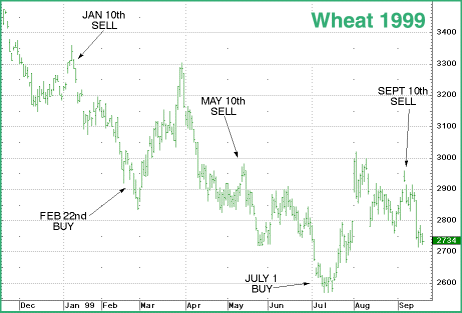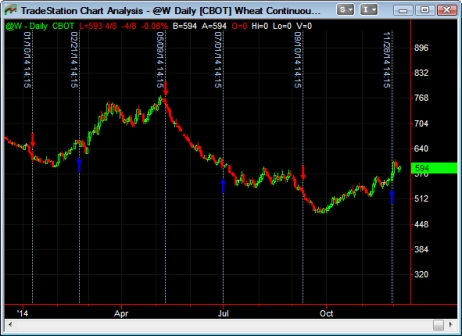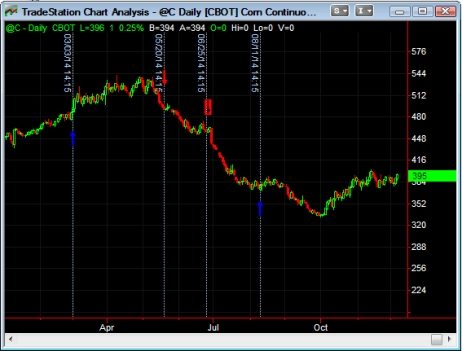Voice From The Tomb History
This is the legend of a wise grain trader that made a fortune trading "seasonals" in the pits of the Chicago Board of Trade.
"After his wife died, a millionaire grain trader dedicated his life to raising their children. The children were lazy and thought they'd inherit all of their father's money. He felt that his children were wasteful and believed they took him for granted. When he died, all the money went to charity. All he left them in his will were the following dates of when to buy and sell. The will said that if they strictly followed his advice, they'd have the fortunes they always thought were going to drop in their laps." Kleinman
So what is a "seasonal"? "Seasonality often plays a part in determining prices for commodities in regular cycles throughout the year. Normal increases and decreases in supply and demand for particular commodities seem to occur every year in fairly consistent patterns. Commodity seasonal patterns might appear to be an easy trading strategy for commodities, but seasonal tendencies are just that - tendencies." Chuck Kowalski
Voice From The Tomb Past Results
The following is an analysis by George Kleinman, a professional futures trader with over 30 years of trading experience. Mr. Kleinman has been kind enough to let me share with you his perspective on The Voice From The Tomb.
"When I first learned of the Voice, I was a bit skeptical; after all, on the surface it looks akin to voodoo. Then, when I thought more about it, I realized there's a sound fundamental basis behind the advice.
After all, there are discernable crop cycles revolving around planting and harvest. For example, the December wheat buy on July 1 coincides with the harvest in the Plains being about half done.
The market generally bottoms around harvest time due to selling pressure of grain sold by farmers right out of the field. The futures market, being the anticipatory beast it is, anticipates the harvest bottom. Therefore, a buying date approximately midway through the harvest makes sense.
My data now goes back 35 years, and I've come to believe there are pearls of wisdom buried within these dates. I've found that while both will tend to put the odds in your favor, the wheat dates are more reliable than the corn. I also found in my practical experience that the dates tend to be excellent turning point signals.
But one can't just hold and reverse on the subsequent date. Rather, after initiation of a position, a trailing stop makes the most sense. A simple optimizing rule of my own is to use a 15 cents per bushel stop to make 15 cents per bushel.
Using these parameters, there've been years (e.g., 1999 and 2001) where the Voice has had a perfect track record. Actually, my data indicates that these guidelines have led to wheat wins more than 70 percent of the time, and only somewhat less for corn." Kleinman
Click these links to view the graphs for Wheat prices from 1999 to 2001, with the Buy/Sell dates indicated. Wheat
Corn
Wheat 1999 - Wheat 2000 - Wheat 2001

Voice From The Tomb Dates
Voice From The Tomb 2024 Results
Current Year Results

